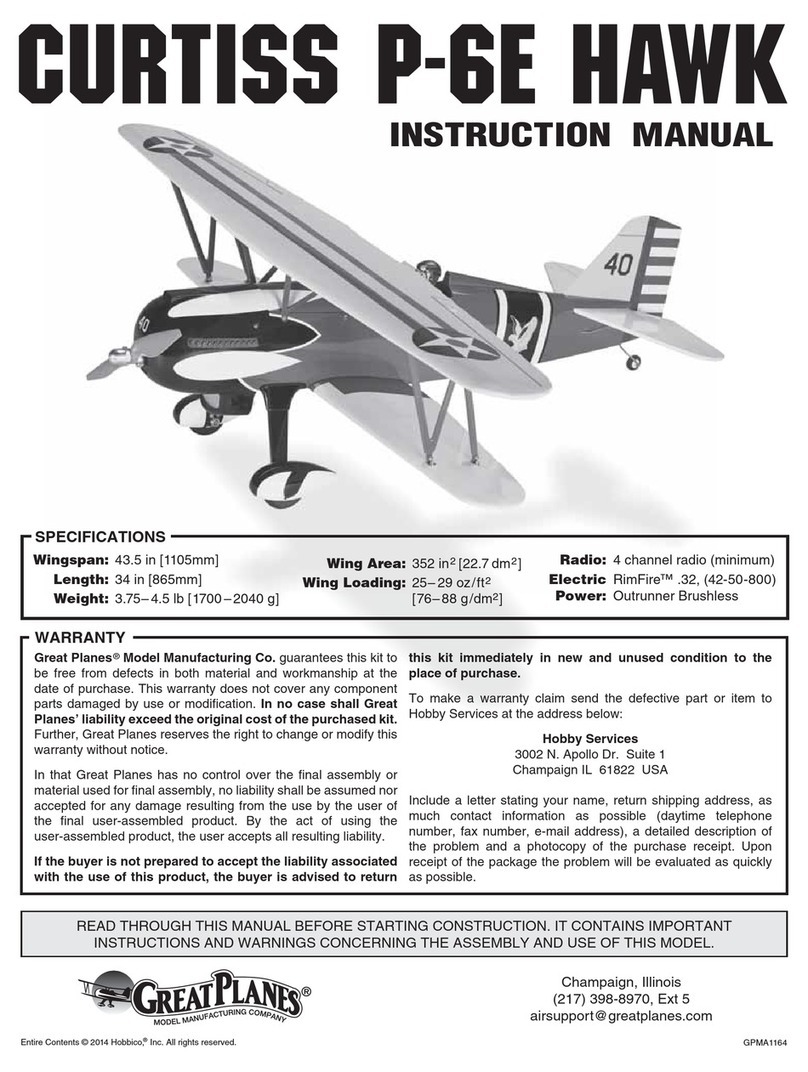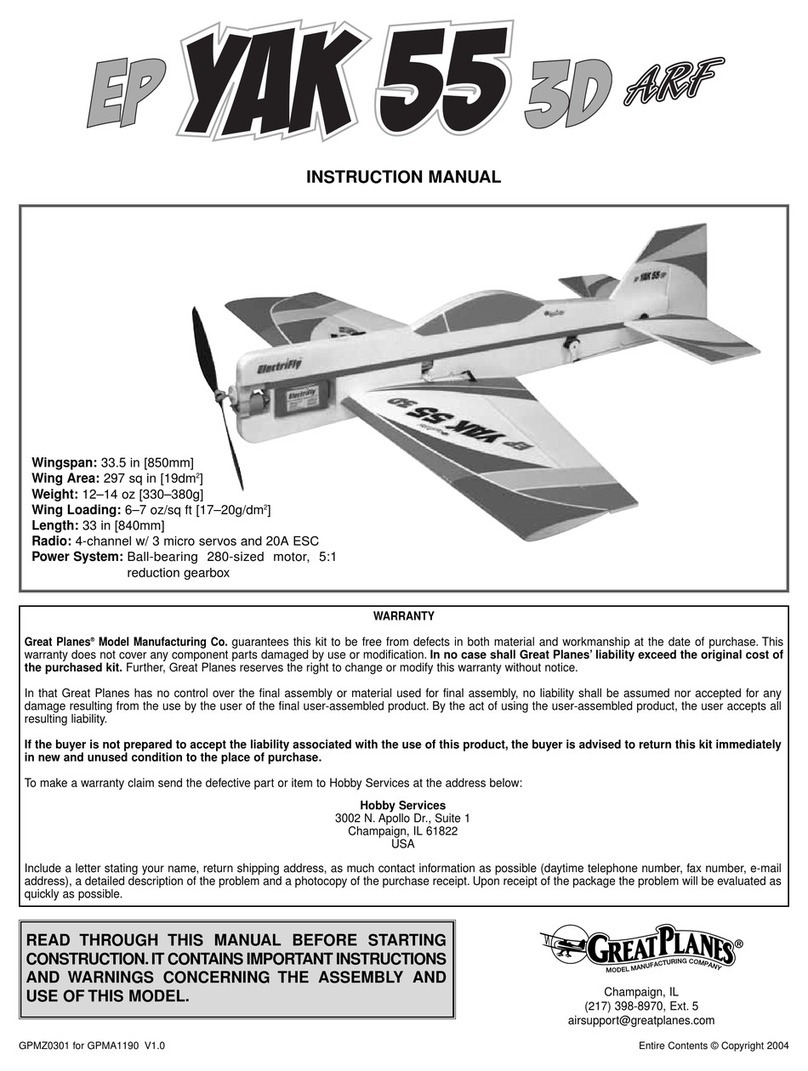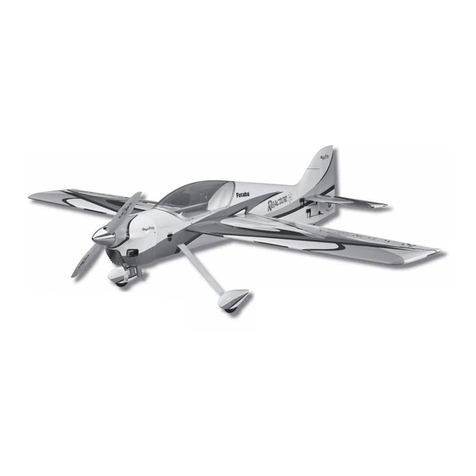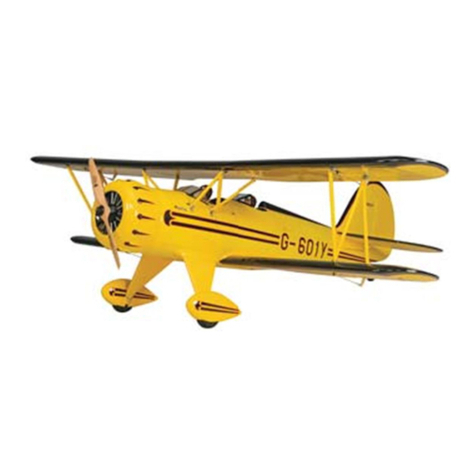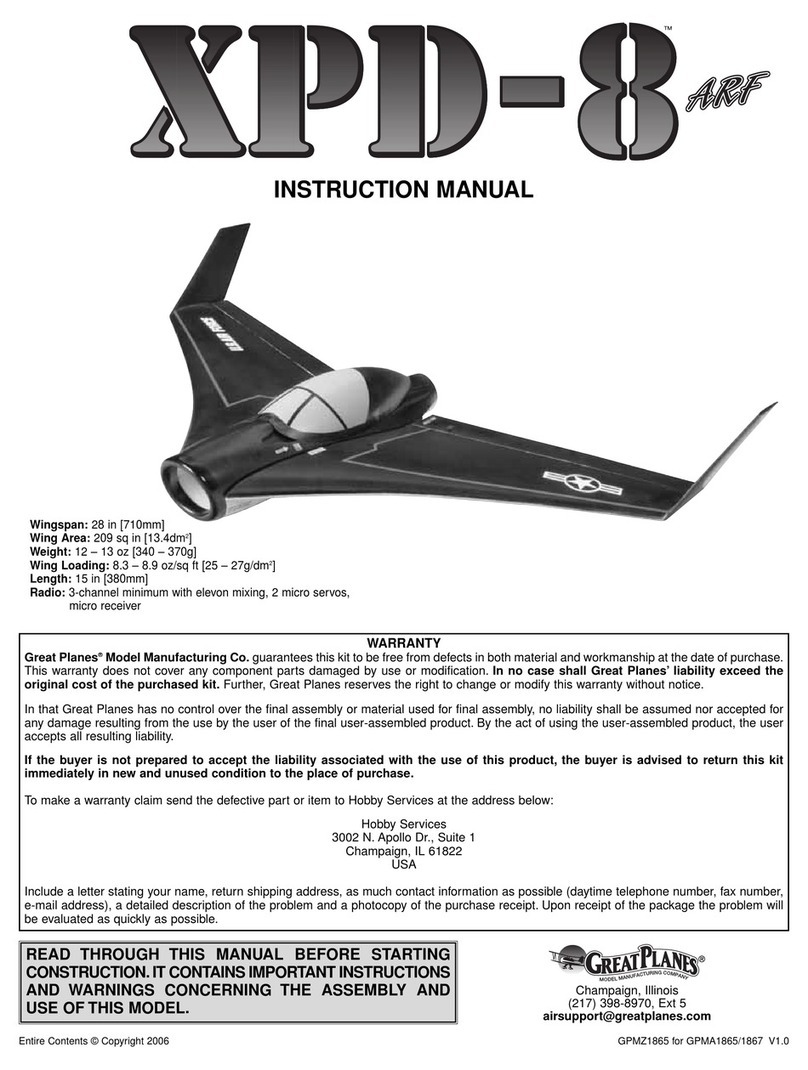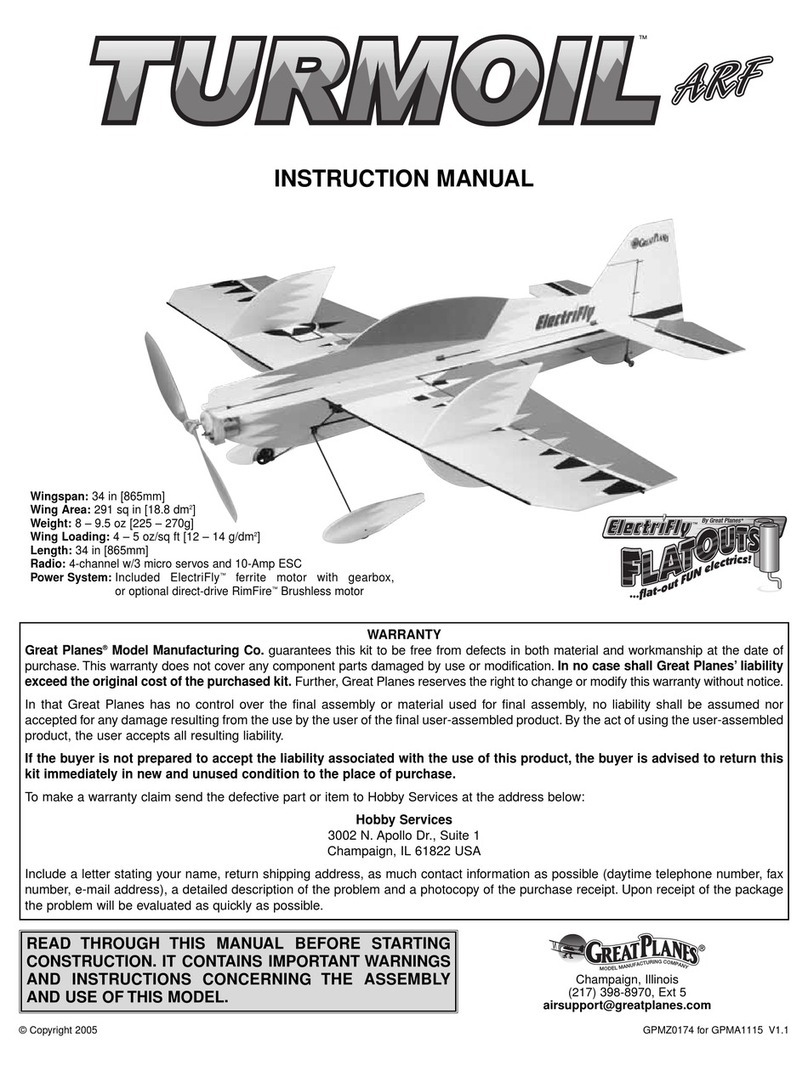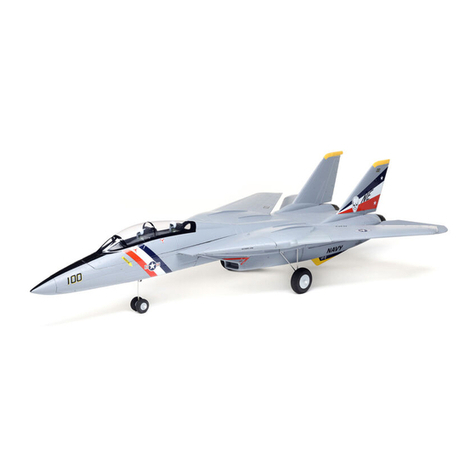
3
the Twinstar EP, if not assembled and operated correctly,
could possibly cause injury to yourself or spectators and
damage to property.
3. You must assemble the model according to the
instructions. Do not alter or modify the model, as doing
so may result in an unsafe or unyable model. In a few
cases the instructions may differ slightly from the photos.
In those instances the written instructions should be
considered as correct.
4. You must take time to build straight, true and strong.
5. You must use an R/C radio system that is in rst-class
condition, and a correctly sized motor and components
(battery, servos, etc.) throughout the building process.
6. You must correctly install all R/C and other components so
that the model operates correctly on the ground and in the air.
7. You must check the operation of the model before every
ight to ensure that all equipment is operating and that the
model has remained structurally sound. Be sure to check
clevises or other connectors often and replace them if they
show any signs of wear or fatigue.
8. If you are not an experienced pilot or have not own
this type of model before, we recommend that you get
the assistance of an experienced pilot in your R/C club for
your rst ights. If you’re not a member of a club, your local
hobby shop has information about clubs in your area whose
membership includes experienced pilots.
9. While this kit has been ight tested to exceed normal use,
if the plane will be used for extremely high stress ying, or if
a motor larger than one in the recommended range is used,
the modeler is responsible for taking steps to reinforce the
high stress points and/or substituting hardware more suitable
for the increased stress.
We, as the kit manufacturer, provide you with a top quality,
thoroughly tested kit and instructions, but ultimately the
quality and yability of your nished model depends
on how you build it; therefore, we cannot in any way
guarantee the performance of your completed model,
and no representations are expressed or implied as to the
performance or safety of your completed model.
REMEMBER: Take your time and follow the instructions
to end up with a well-built model that is straight and true.
DECISIONS YOU MUST MAKE
This is a partial list of items required to nish the Twinstar EP
that may require planning or decision making before starting
to build. Order numbers are provided in parentheses.
Radio Equipment
The Twinstar EP requires a minimum 4-channel radio
system with four 39 oz.-in. [2.8 kg-cm] minimum torque
micro sized servos.
Because the motors are mounted on the wings, rudder
authority is important. We recommend the Futaba S3150
mini servo as an optional higher torque servo for the rudder
and it is shown in the building section of this manual.
In addition, two 12" [305mm] servo extensions are required
for the aileron servos. Two Y-harnesses will also be required
for the ailerons and the ESCs.
Recommended part numbers for the radio components are
provided below:
❍Futaba S3115 Micro Precision Servo (FUTM0415)
❍Futaba S3150 Slim Digital Servo (FUTM0303)
❍Hobbico 12" Extension Futaba J (HCAM2100)
❍Futaba Dual Servo Extension 6" J (FUTM4130)
Brushless Motor Recommendations
We recommend two RimFire .10 brushless motors and two
25A ESCs. Other motors may work ne. However, the motor
mount holes are spaced for the RimFire .10 and this motor
has been extensively ight tested and performs well in the
Twinstar EP. Two 8x8E electric propellers are recommended
with the RimFire .10. Many batteries will work as a ight
battery. We suggest the 11.1V 3800mAh FP30 FlightPower
pack. Part numbers are provided below:
❍Great Planes RimFire .10 35-30-1250 Outrunner
Brushless (GPMG4595)
❍Great Planes Silver Series 25A Brushless ESC 5V/2A
BEC (GPMM1820)
❍APC 8x8 Thin Electric Propeller (APCQ4116)
❍FlightPower LiPo FP30 3S 11.1V 3800mAh 30C
(FPWP3383)
If you need a charger for your ight battery, we suggest either
the Triton EQ or Triton 2 EQ. Both are very versatile chargers
that can charge virtually any hobby battery currently available.
❍Great Planes ElectriFly Triton EQ AC/DC Charger
(GPMM3155)
❍Great Planes ElectriFly Triton2 EQ AC/DC Charger
(GPMM3156)
ADDITIONAL ITEMS REQUIRED
Adhesives and Building Supplies
This is the list of Adhesives and Building Supplies that are
required to nish the Twinstar EP:
❍1/2 oz. [15g] Thin Pro CA (GPMR6001)
❍Pro 6-minute or 30-minute epoxy (GPMR6045 or
GPMR6047)
❍Threadlocker thread locking cement (GPMR6060)
❍Denatured alcohol (for epoxy clean up)
❍Drill bits: 1/16" [1.6mm], 5/64" [2mm]
❍Rotary tool with cutting bit
❍Revell Premium Soft Handle Knife w/Blades (5)
(RMXR6900)
❍Top Flite MonoKote sealing iron (TOPR2100)
❍Top Flite Hot Sock iron cover (TOPR2175)
❍Panel Line Pen (TOPQ2510)
❍Small clamps
❍Masking tape
❍Household oil
